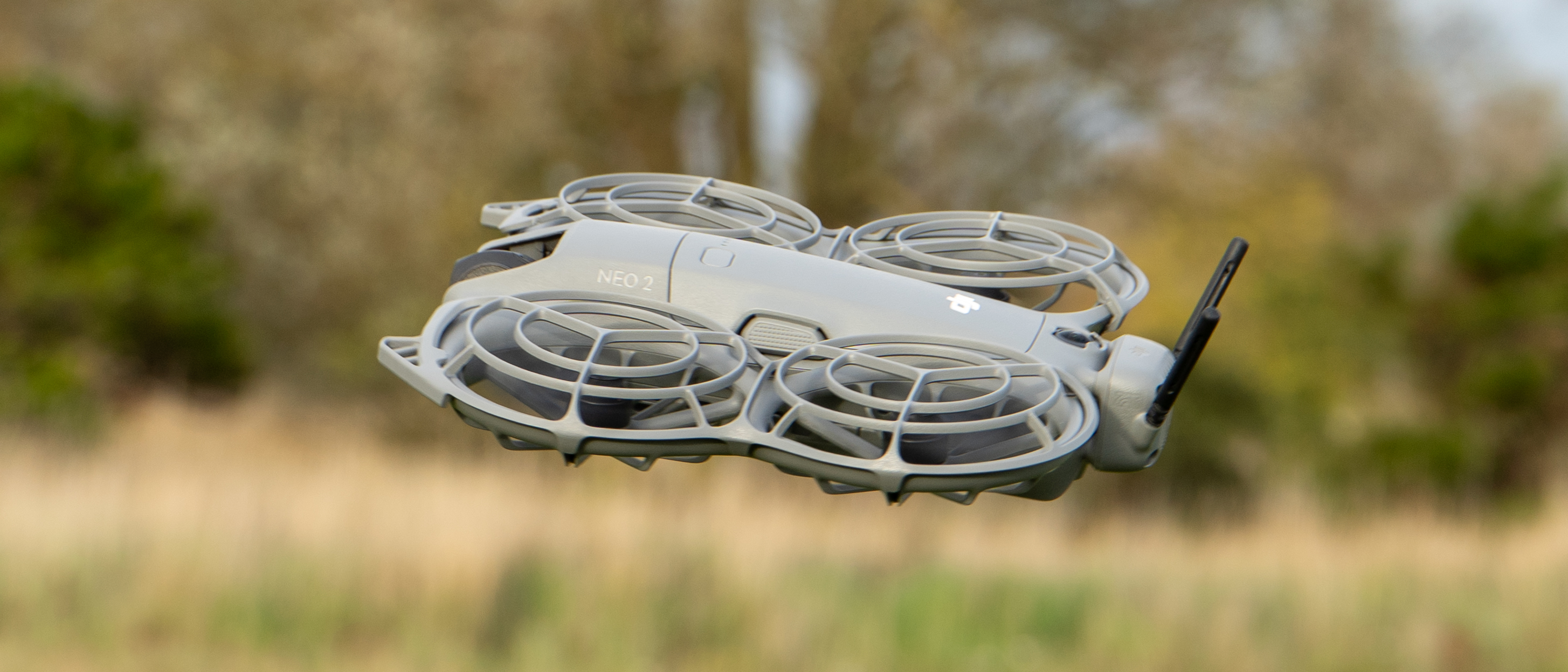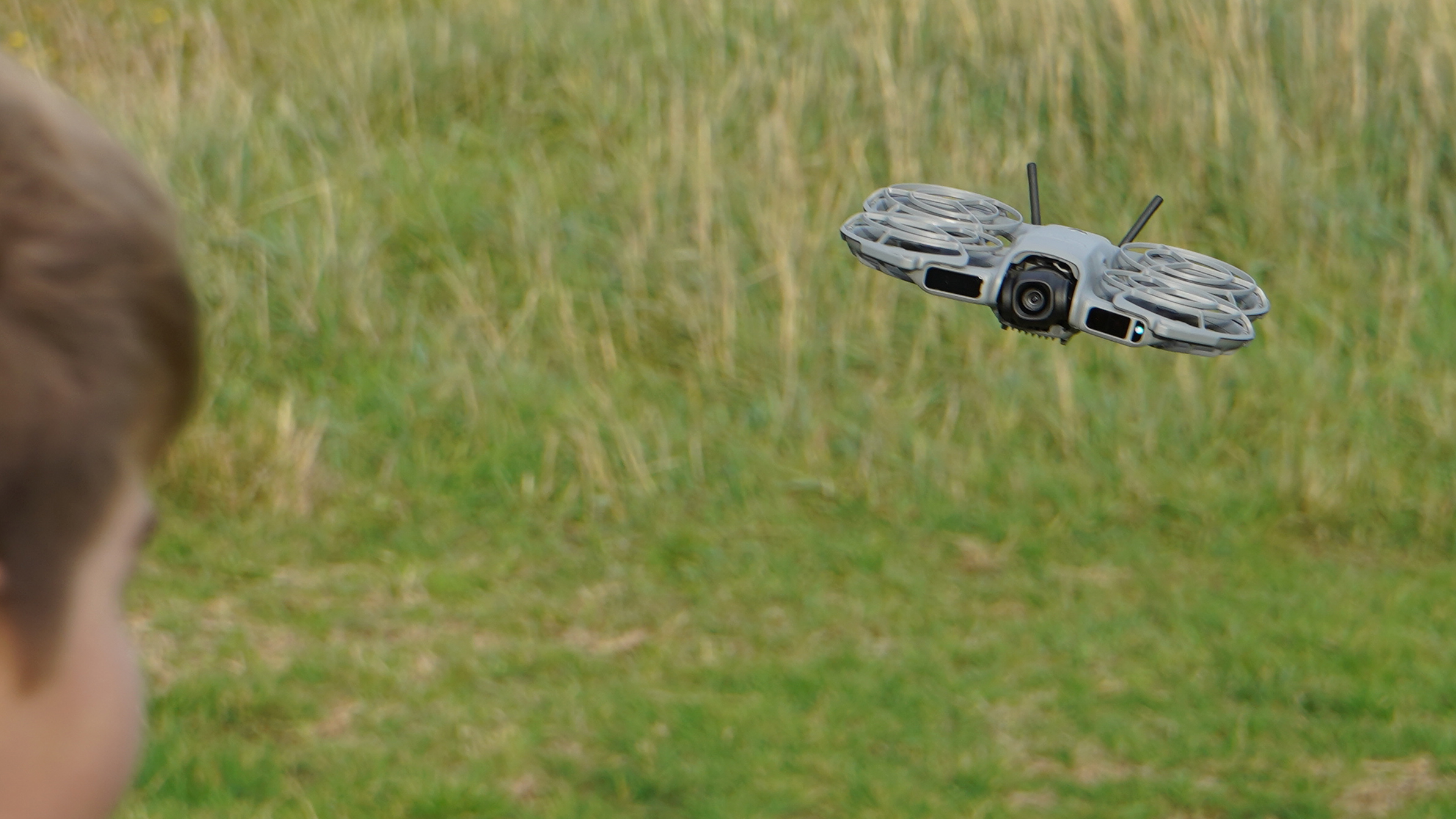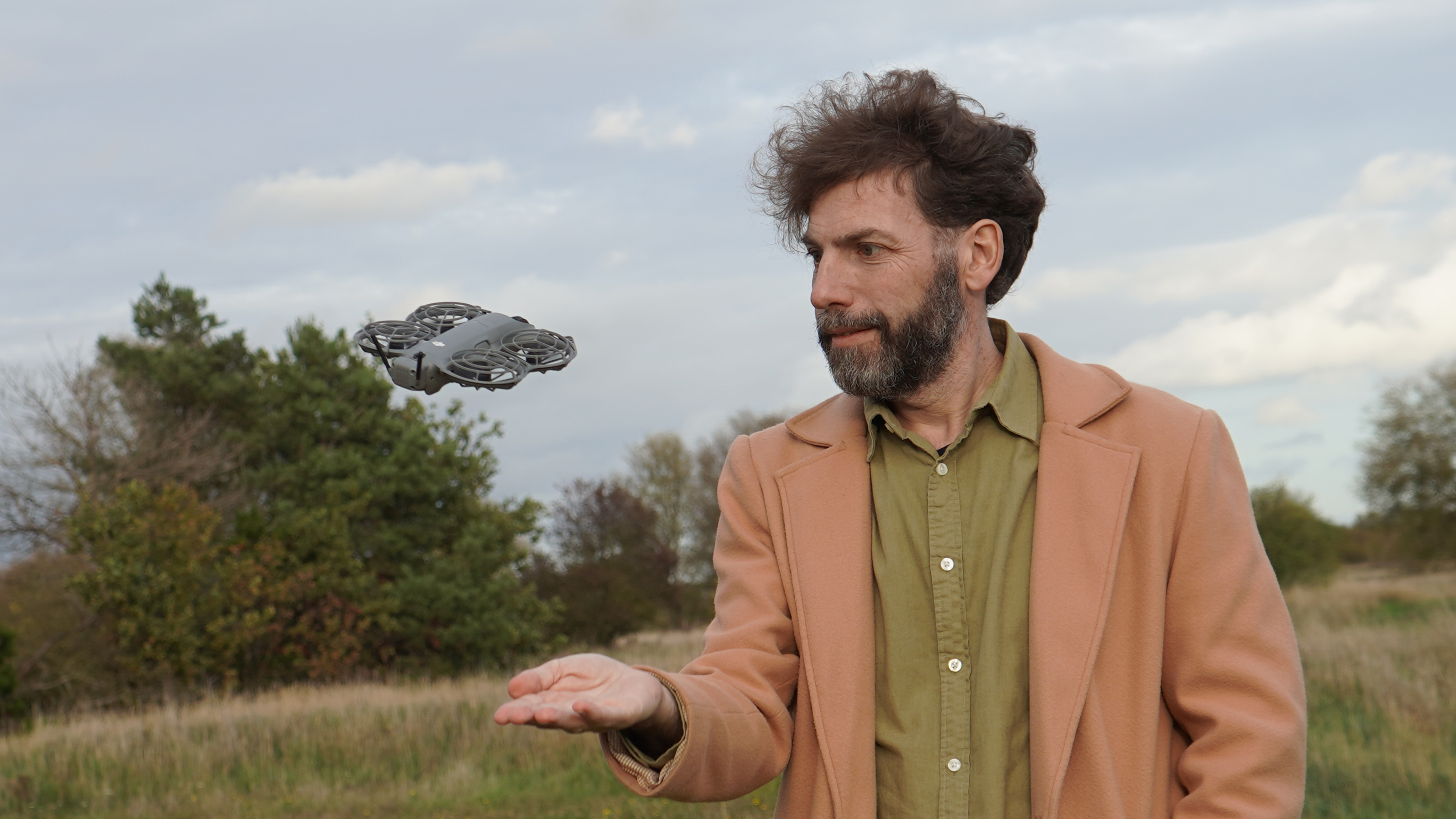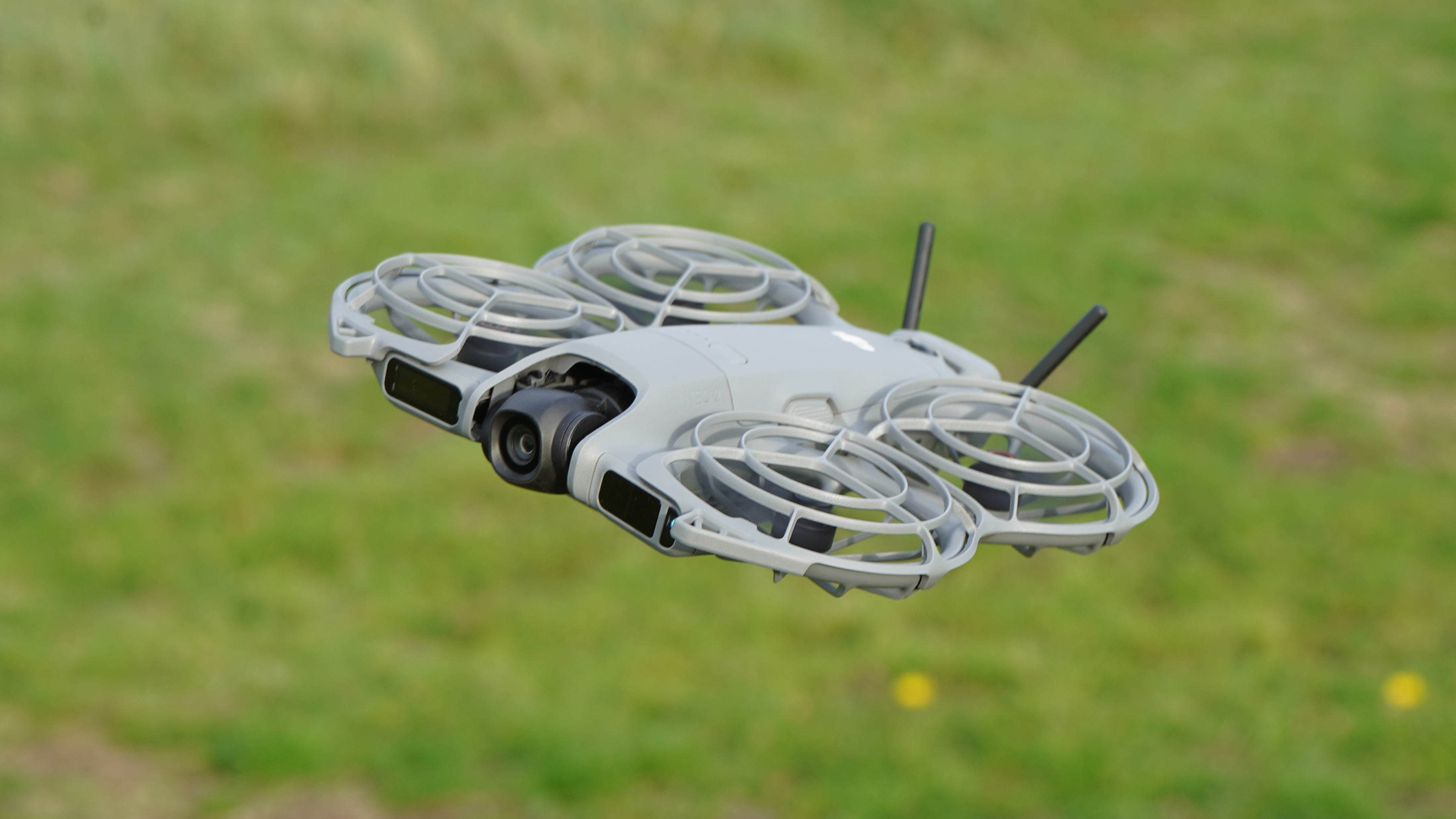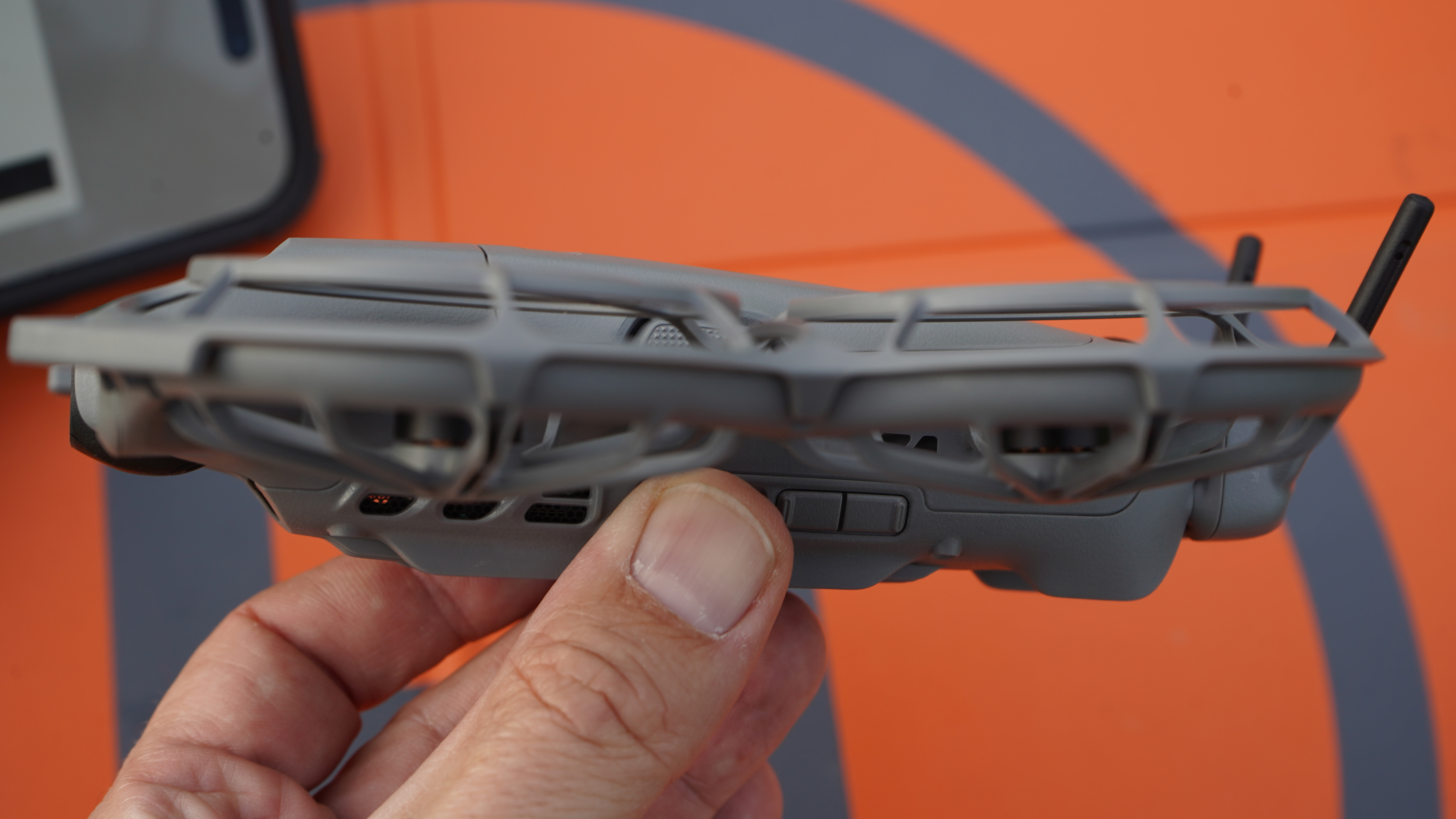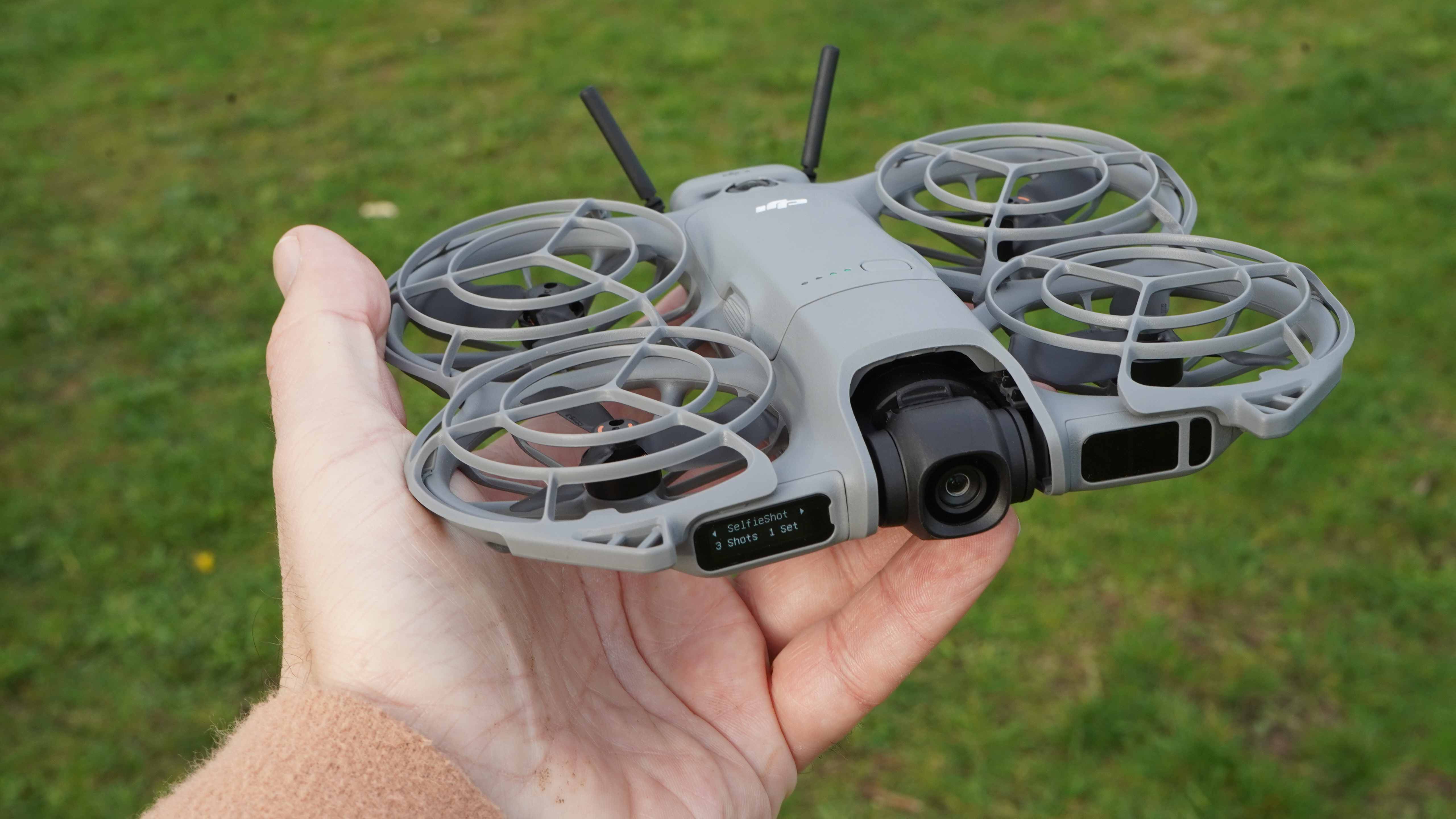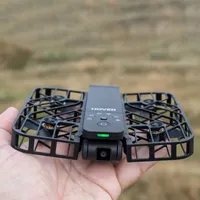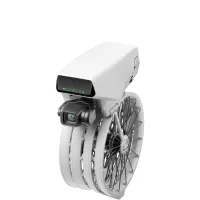Digital Camera World Verdict
This is a technical marvel, offering so much in such a small package – and surprisingly safely, too. Collision sensing combined with AI tracking does a great job of keeping up with even active children, while creatives will appreciate the extensive smart controls. Drone purists might want a longer battery life, but that'd cost weight.
Pros
- +
All-round collision sensing
- +
Impressive tracking and range of controls
- +
Specific cycling modes
- +
Selfie mode gives you multiple framing options
- +
Improved battery life
Cons
- -
Voice control needs phone or Bluetooth headphones (it can't hear over its own props!
- -
I found the battery occasionally a bit fiddly to clip in and out
- -
Internal memory only – no MicroSD (some may prefer this!)
Why you can trust Digital Camera World
The original DJI Neo is an impressive 'follow-me' drone, but it was one of the few areas the company was, arguably, having to play catch-up in. When it came out, the HoverAir X1 was already showing the world that drones didn't need controllers, with drones that could use AI to follow you activities and capture your moments.
DJI's first response was already impressive enough – plus it brought with it the option of more 'traditional' remote control (insofar as anything in this industry is traditional), making a very. comprehensive device. Options, too, mean you can spend as much, or as little, as you want to get started. Never a bad thing.
This new DJI Neo 2 feels like DJI has dived into their high-tech kitchen sink and included everything they could find – the results are impressive. The drone now feels boasts omnidirectional sensing as well as prop guards – a massive boost to safety. At the front, there is a LiDAR as part of this all-around vision, while usability gets a boost with the arrival of a display.
This is still a 'Follow-me' drone, but it is a lot better equipped than its already mighty predecessor. It still offers the upgrade route, too, with RC sensors and transmission system on board, offering the option of 10km / 6 mile control with an optional remote.
Is there anything more a drone needs to be?
DJI Neo 2: Pricing
The DJI Neo 2 has already launched in China, and on November 13 goes on sale in the UK and Europe for £209 for the drone alone – which, in this case, is quite enough use it. A Fly More bundle version – which gets you the drone and 3 batteries – will set you back £289.
If you want a "real" remote controller, with sticks, that uses radio signals for extra range (and your phone as the screen), it'll set you back £289 or £349 in Fly More Combo.
The best camera deals, reviews, product advice, and unmissable photography news, direct to your inbox!
Wondering why the prices aren't showing US Dollars? Because of the political situation, the drone isn't actually being launched in the US.
DJI Neo 2: Specifications
Take off weight | 151g |
Dimensions | 167×171×54mm (with propeller guards and DJI Neo 2 Digital Transceiver) |
Sensor size | 1/2-inch |
Video max | 4K/60fps (100fps) |
Picture max | 12MP |
Flight time | 19 min |
Range | 10km (remote) or 500m (wifi) |
Storage | 49GB |
DJI Neo 2: Build and handling
The DJI Neo 2, like its predecessor, is a rigid frame with a cage-like design around four ducted vents. It has managed to pick up some significant changes though, which are easily seen on the outside.
As well as growing dual antenna at the back, and fish-eye optical sensors for a collision sensing system (top and bottom, mounted near the back), the drone has got two dark patches on the front – a matrix LED display to show the current mode and a LiDAR 3D detection system.
The camera, too, is now mounted on a better 2-axis gimbal, which means it is able to get smoother results without having to resort to digital image stabilization. That is a significant enhancement.
Next to the LiDAR sensor is a reasonably bright (but not irritating) light which indicates to the operator, by changing color whether the drone has recognised any of the range of gesture controls has been understood.
These are explained simply by a tutorial in the app, though a child less than ten was able to figure them out – at least the directional ones – on his own on the first time out.
Using the app, which easily links to the drone and can be used with on-screen controls – even including simulated sticks – is one way to control the drone, and phone users will find it reassuring, but it isn't necessary. You can just hold the drone in your hand, cycle through the modes with the smaller buttons, and launch with the bigger one.
The drone will use a built-in speaker to give you a countdown and if you're not holding it flat on your palm, it'll decide not to fly on its own using its sensors (the IMU).
The drone can charge its battery via a USB-C port at the lower rear, and this – or the 80MB/S wireless – are the means to download content from the 49GB internal storage. This is very convenient, though I prefer the fly more kit's charging hub which will do three batteries without having to swap them.
Like modern DJI devices, it does need activation via the app, but this provides useful safety features like maps warning you of nearby dangers, so it doesnt' seem to be an issue.
DJI Neo 2: Performance
I tested the DJI Neo 2 with my 'junior assistant' aged 9, and he did a lot more of the running around and trying to give it the slip. I was thoroughly impressed with the performance
The new cycling mode was impressive too, seeming to anticipate. In winter, though, the sensing system might miss a thin tree branch, but the light frame and guards mean, if you're flying over anything other than road, you'll likely be OK (so mountain bikers will be better off – and there are probably rules about using the drone over real roads!)
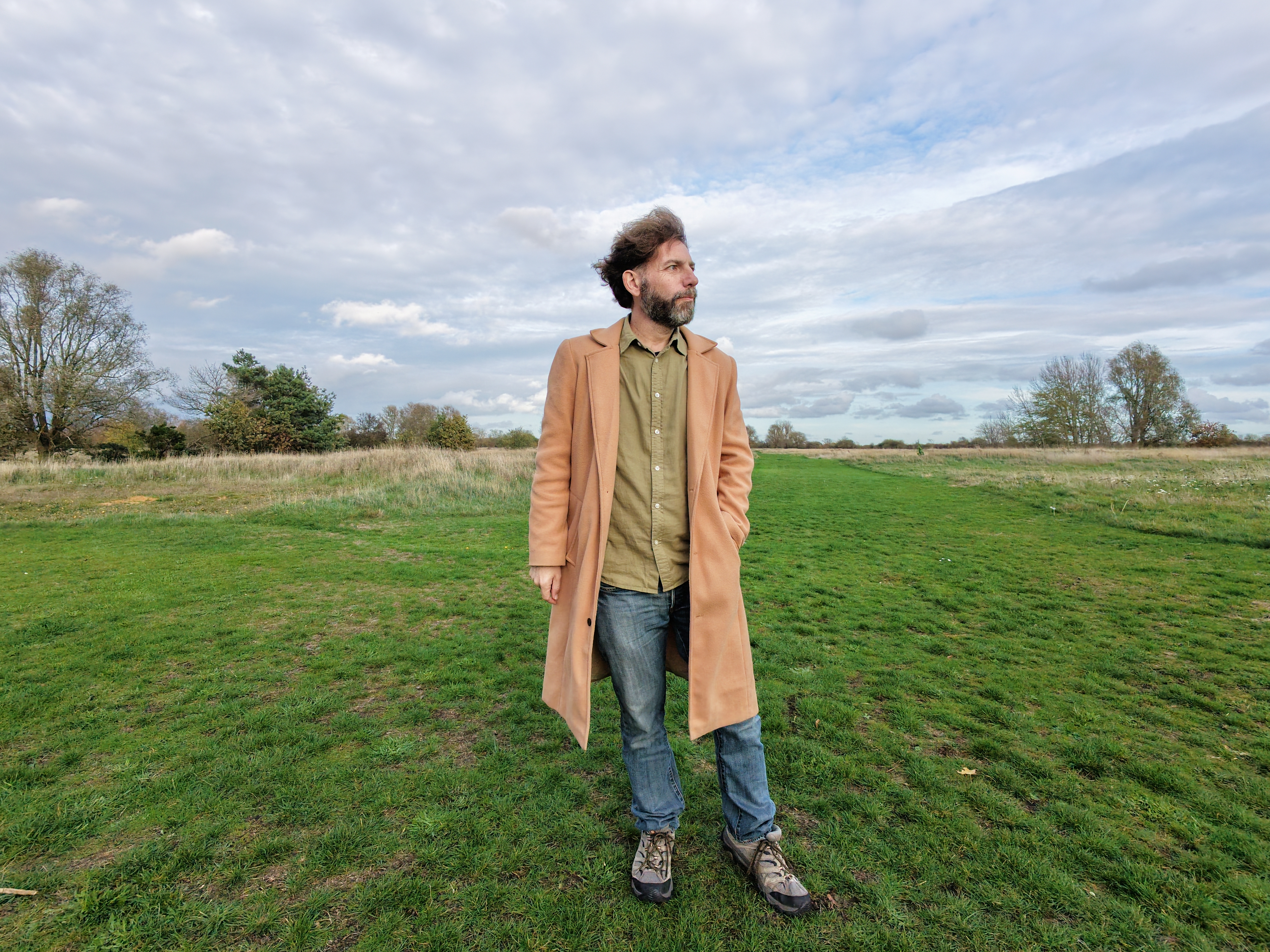


Above: Some sample video clips of me (sorry) in a field. Note the quality, though – and some of these were taken as the light was getting past its best and the breeze was, though not the level 5 limit that'd bring the Neo 2 down, enough to make me appreciate the 2-axis gimbal.
The ActiveTrack subject tracking was successful more than I anticipated, though after a long session a boy was able to quickly duck under it and eventually lose the drone. It's not foolproof, but it seemed a lot smarter than the original Neo to my eye.
DJI Neo 2: Overall Verdict
The Neo 2 is a genuine technical marvel, with output to rival bigger and more expensive machines – the only compromise being the shorter battery life. And at 19 minutes (theoretical) it isn't that short either. If you're happy to look at the 'Fly More Kit' section of the price list, I promise you'll enjoy the drone more!
Moreover, the tracking impressed me, and my junior assistant was not only very impressed, but seemed very safe and happy, and found the operation without the controller intuitive. As a younger pilot, no nostalgic complaint kicked in; he saw it as cool and futuristic. So this is a great drone for kids, beginners, and just casual use.
As a practical video or camera drone for serious creators, it won't beat those with higher specs, but it'll get content more easily in more situations which is certainly YouTube grade. The new Selfie mode – capturing 3 different framings – also seems like a great way to be assured you've got the right shot of yourself or your group.
There might even be the odd chance to grab shots you wouldn't get elsewhere and – though it's still not a cheap way into FPV – it's great that the option is there.
Features ★★★★★ | There are so many features it is hard to imagine they're crammed into the little frame. |
Design ★★★★☆ | Easy to use and launch, clever and simple. It's a minor complaint, but the addition of antenna do make portability a little more irksome. |
Performance ★★★★★ | The camera is impressive, the AI tracking is outstanding, and overall I was surprised how reliable this device was. |
Value ★★★★☆ | Real collision avoidance at this price, and all the possibilities seems amazing – but do remember that some features need you to dig a bit deeper (and the 'fly more' deals are nearly essential). |
DJI Neo 2: Alternatives
The HoverAir X1 and the high-spec follow-up, the Hover Air X1 ProMax, are both well worth considering, especially if you can't get your hands on the Neo 2. The folding design is simply brilliant.

With over 20 years of expertise as a tech journalist, Adam brings a wealth of knowledge across a vast number of product categories, including timelapse cameras, home security cameras, NVR cameras, photography books, webcams, 3D printers and 3D scanners, borescopes, radar detectors… and, above all, drones.
Adam is our resident expert on all aspects of camera drones and drone photography, from buying guides on the best choices for aerial photographers of all ability levels to the latest rules and regulations on piloting drones.
He is the author of a number of books including The Complete Guide to Drones, The Smart Smart Home Handbook, 101 Tips for DSLR Video and The Drone Pilot's Handbook.
You must confirm your public display name before commenting
Please logout and then login again, you will then be prompted to enter your display name.

